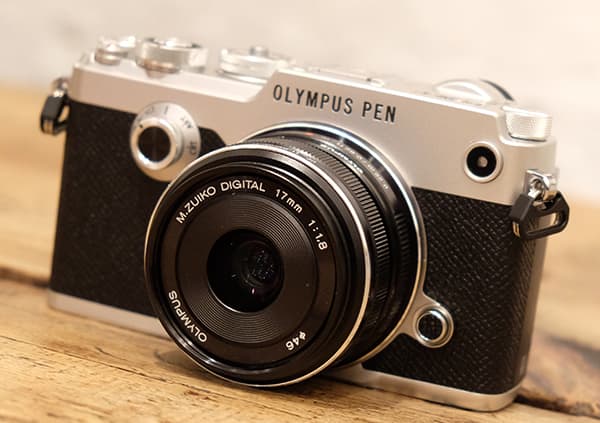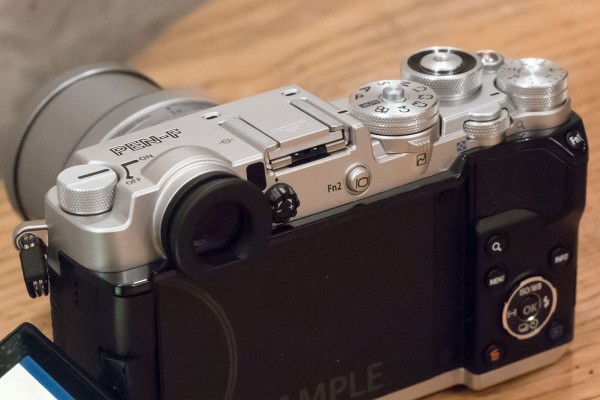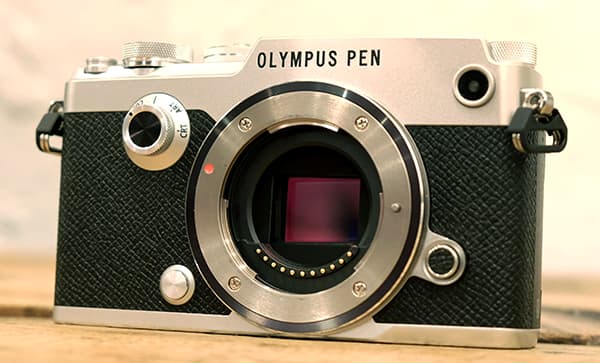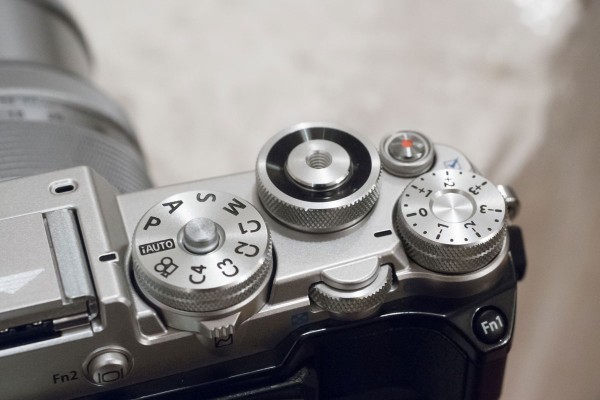1. Designed as its analog namesake, the Pen F
The new Olympus Pen F takes its design from the original Pen F film camera that was released in 1963. While the new model incorporates many more physical controls than the original, it keeps things consistent with the use of a leather-like covering around the front and back, with milled aluminium dials and magnesium alloy used for the top and front plates. It also incorporates a new Creative Dial in place of the shutter speed dial on the original model, which can be used to access the camera’s various Art options and colour modes, including new Monochrome and Color Profile Control options. And, to further illustrate how much design is key for the camera, Olympus even claims it has no visible screws around its body.

2. Newly developed 20MP sensor
Olympus started out using 12MP sensors for its first few Micro Four Thirds cameras and has employed 16MP sensors for the last few generations of its Pen and OM-D system models. The new Pen F, however, debuts a new 20MP sensor. Although this isn’t the first Micro Four Thirds model to offer this – that honour went to last year’s Panasonic Lumix GX8 – Olympus’s press release states that the sensor is ‘newly developed’. This lacks an anti-aliasing filter to benefit resolution and it’s paired with the same TruePic VII engine that has featured inside the camera’s recent stablemates, from the budget Pen E-PL7 camera to the flagship OM-D model, the OM-D E-M1.
3. First Pen model with a built-in electronic viewfinder
Olympus’s digital OM-D models have sported electronic viewfinders from the off, although the Pen series has only offered LCD screens for the purpose of composition and image viewing. This meant that using a separate electronic viewfinder was only possible with models equipped with both a hot shoe and an accessory port. The Pen F changes all this, with a 2.36million dot OLED EVF incorporated into the body and a hot shoe next to this on the top plate for the use of additional accessories such as flashguns.

4. 50/80MP output with the High Res Shot mode
Olympus wowed us last year with its High Res shot mode, which was first seen on the OM-D E-M5 II. This allowed images to be output as 40MP JPEGs or 64MP Raw files, which it achieved by capturing separate exposures, with very minor shifts in the position of the sensor between each one, before combining these into a single image. The good news is that it has now included this feature on the Pen F, with the option to output images as 50MP JPEGs or Raw files at a staggering 80MP. The way this is captured means that it only works well with both a static subject and camera, but it should be exciting for still-life and macro and photographers looking to get extraordinary detail without having to resort to pricier medium-format systems.
5. No 4K video recording
Olympus hasn’t yet offered 4K video recording on any of its cameras – the closest it’s come has been the 4K Time Lapse Movie option on its OM-D E-M10 II (and later the E-M1 and E-M5 II via firmware updates), something that has also been included in the Pen F. Sadly, standard 4K video recording is absent here, with video recording options topping out at the lower-resolution Full HD standard, at frame rates up to 50/60p. It’s also a shame to find no microphone or headphone ports on the camera’s body, meaning your only option is the built-in stereo microphones for recording, although the camera does have a clean (uncompressed) HDMI out option and footage can be recorded at a maximum bit rate of 77Mbps when using the ALL-I setting.

6. Five-axis image stabilisation
One of the highlights of the OM-D E-M5 II is its five-axis Voice Coil Motor (VCM) image stabilisation system, which promises five EV steps of correction over roll, pitch, yaw, vertical shift and horizontal shift. The new Pen F matches this, with stabilisation effective whether you’re shooting stills or videos, and the further benefit of automatic panning detection to ensure this is only applied in the required axis when panning a subject. As this is sensor based this works with even older, manual focus lenses, with the camera just needing the focal length to be manually input if it cannot determine this itself.
7. Up to 20fps burst shooting
When it comes to burst shooting the Pen F can shoot continuously at a perfectly respectable 10fps, although this is using the mechanical shutter, with focus fixed to the first frame. With the Silent mode you can double this to 20fps (thanks to the use of an electronic shutter), with images captured at the sensor’s full 20MP, while a 5fps option is also on hand for occasions when you want to maintain continuous autofocus throughout the burst.

8. Shortest shutter-release lag of any CSC
To make it a more appealing option for the photographer for whom speed is top priority, the Pen F is said to have the shortest shutter release lag time of any Compact System Camera available (at the time of its release), at just 0.044 seconds. This is complemented by a fast maximum shutter speed of 1/8000sec when using the mechanical shutter, and an extension up to 1/16,000 when using the camera’s electronic shutter, which should make it easier to get the shot you want when using wide-aperture lenses in particularly bright conditions.
9. New exposure compensation dial
Although it has been possible to adjust exposure compensation using top-plate dials on previous Olympus models, the Pen F is the first model to have a dedicated and marked exposure-compensation dial. This is a feature that’s now widely seen on compacts and some CSCs from rival manufacturers, and it allows for adjustment over a range of -/+3EV in third-stop increments.








